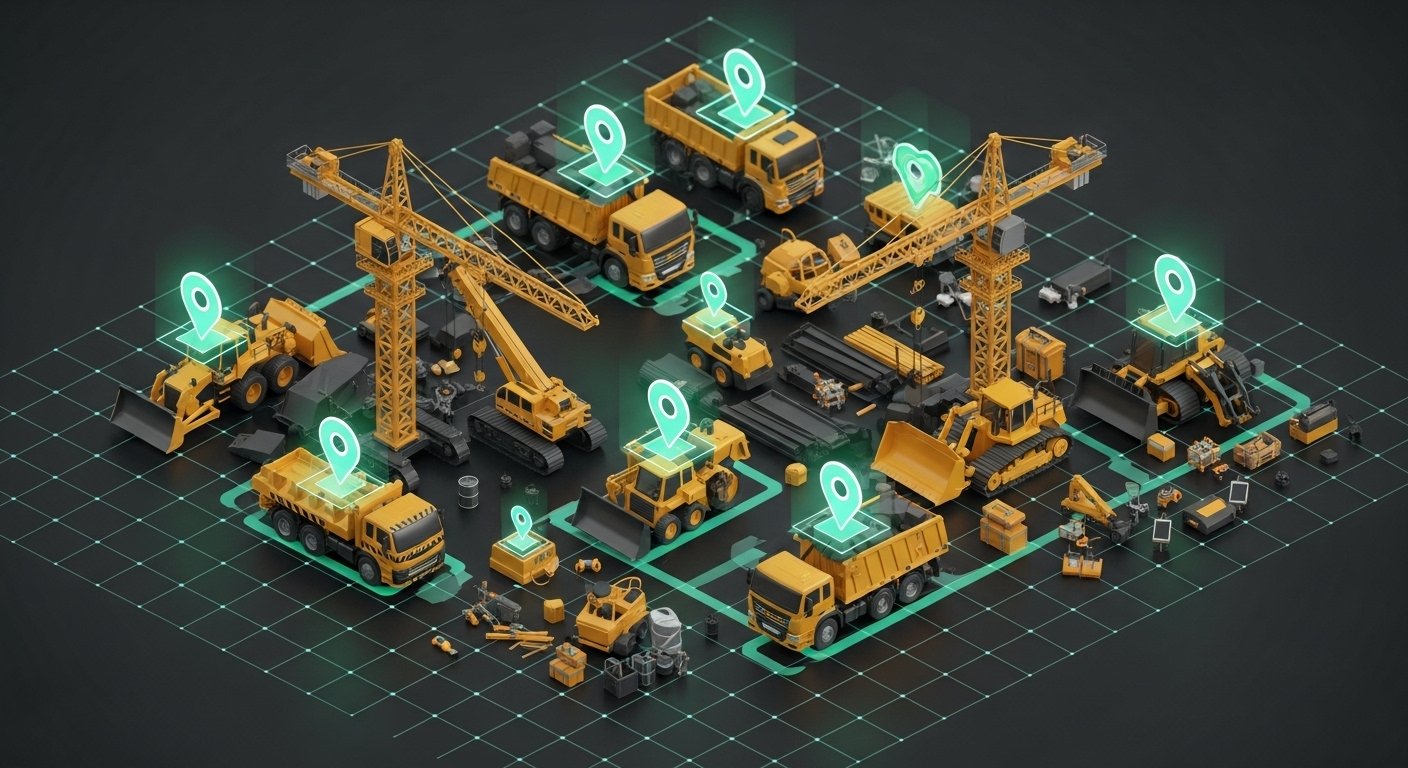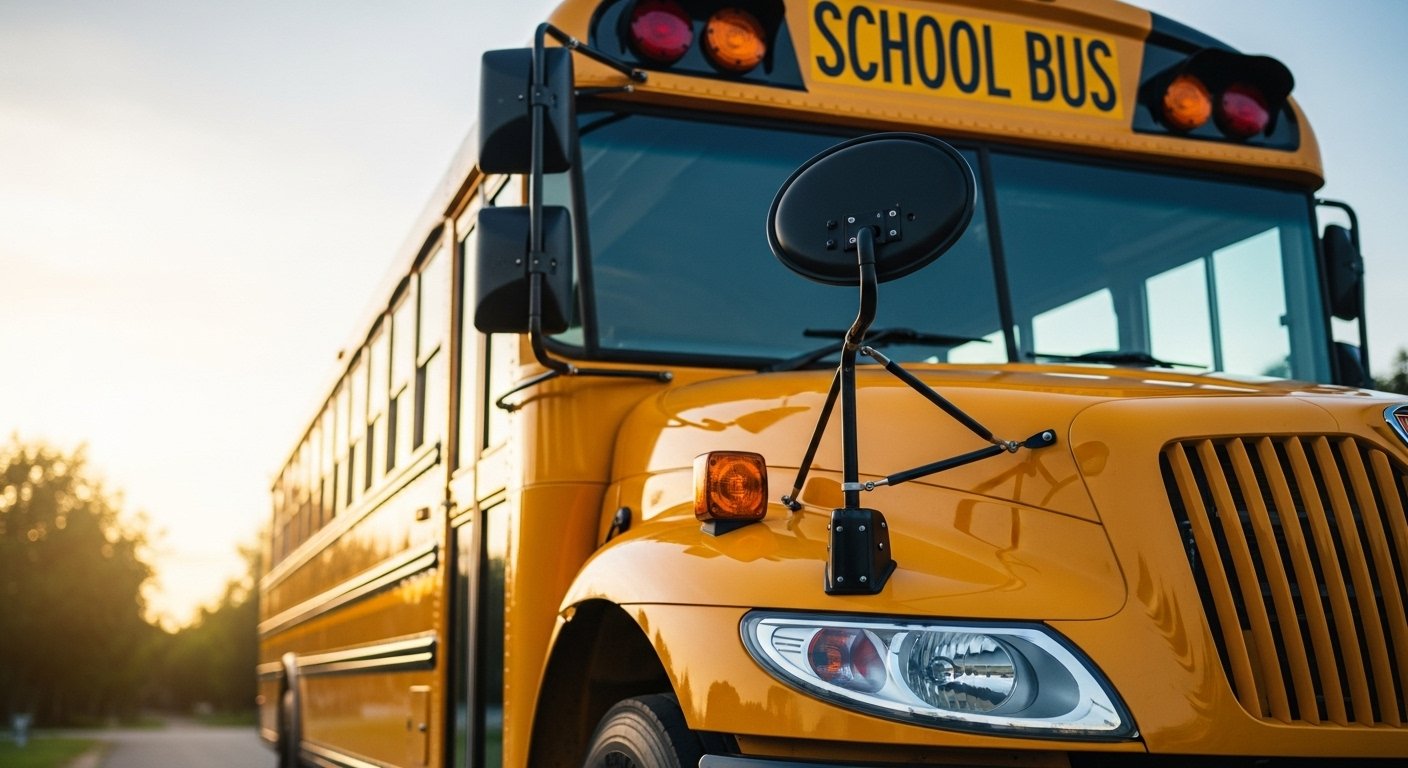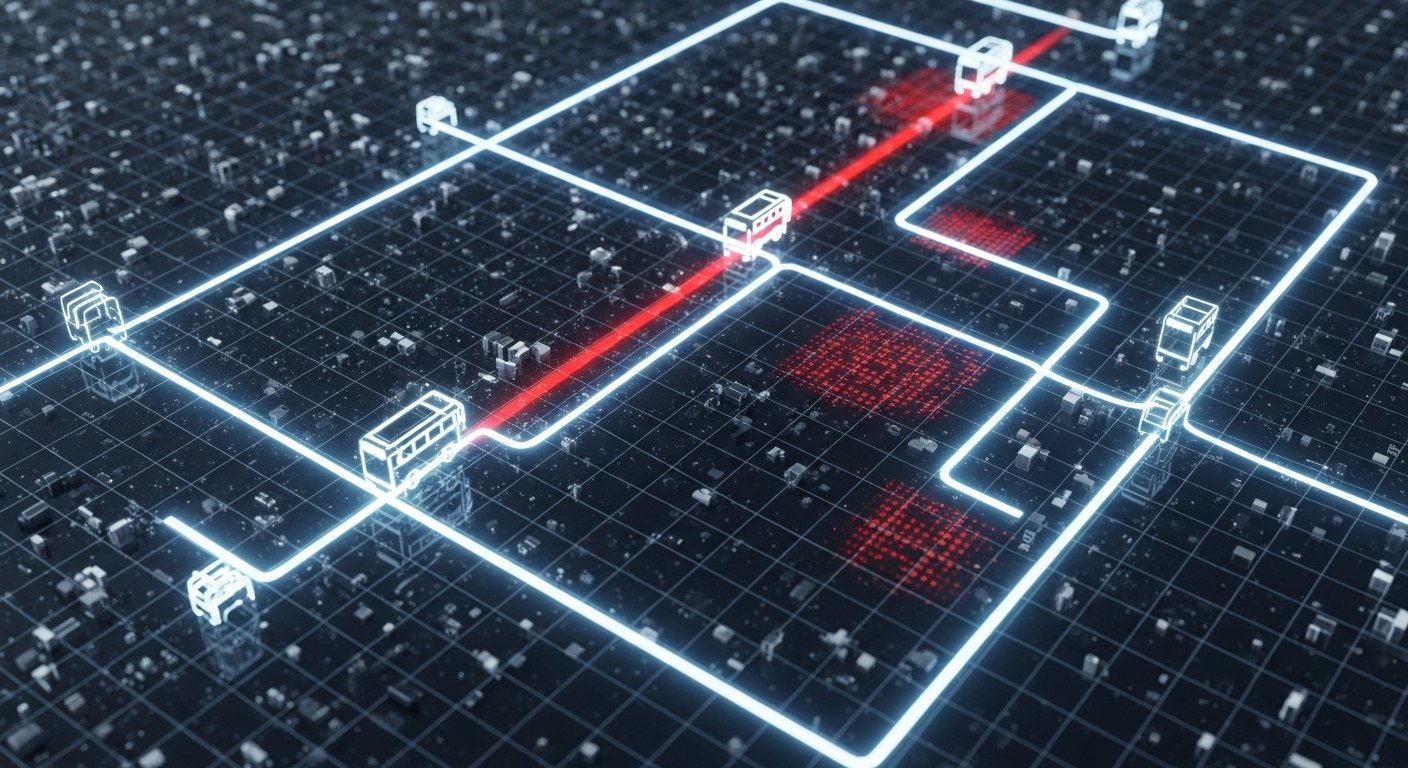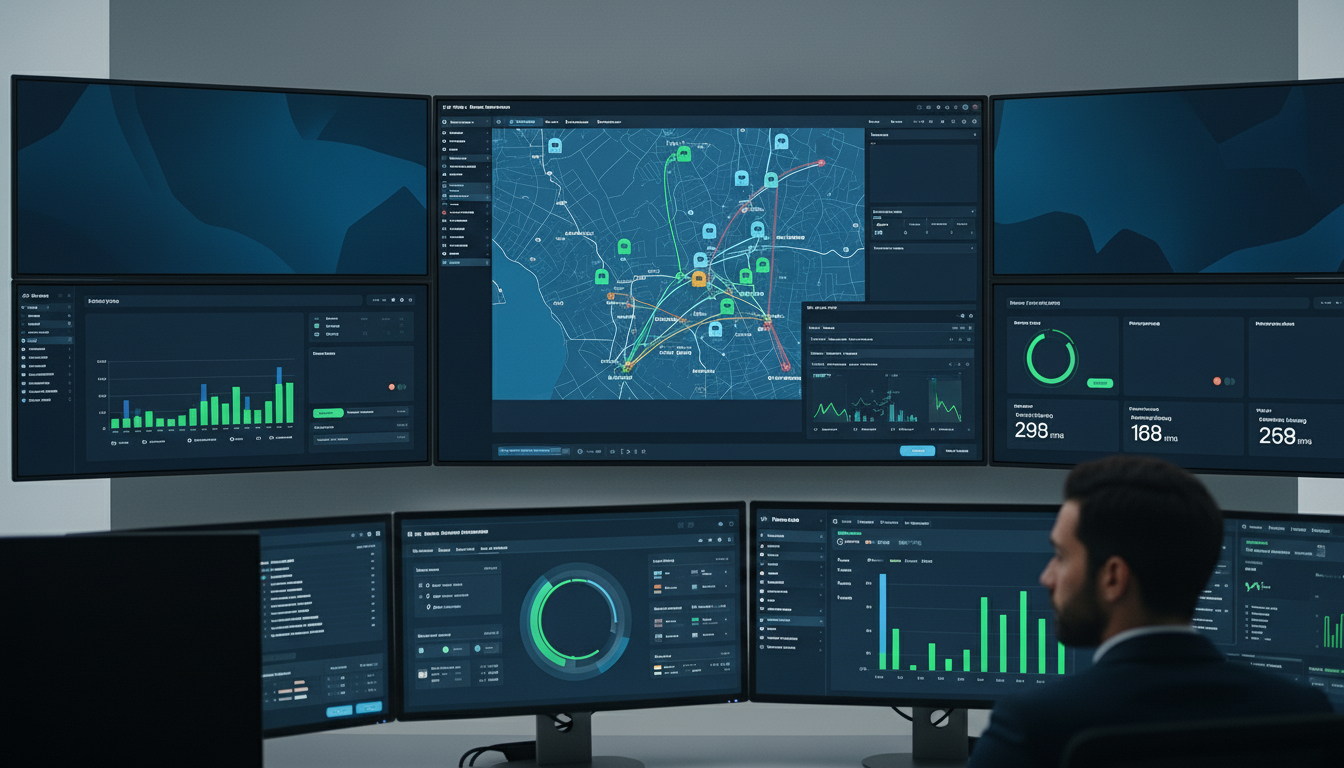The landscape of equipment rental is developing, requiring greater than simply durable machinery; it requires advanced possession management. For lots of B2B companies, the invisible costs associated with possession burglary, unapproved use, and ineffective implementation stand for a considerable drain on success. These challenges not just wear down margins but also strain client connections and present considerable functional dangers. Traditional security measures often respond to problems instead compared to preventing them, leaving critical possessions vulnerable.
The service exists in a positive, smart approach: géolocalisation. This electronic technology offers an effective structure for developing online limits about your high-value equipment, changing how you protect, monitor, and manage your possessions. By leveraging precise place information, geofencing equips companies to preemptively address security risks and optimize functional process. This article will deconstruct the basics of geofencing, elucidate its extensive effect on possession security and functional effectiveness, and provide practical understandings for its smooth application within your B2B enterprise.
Understanding Geofencing: Basics and Core Auto technicians
What Exactly is Geofencing?
En son coeur, geofencing involves producing an online limit about a real-world geographical location. This invisible boundary, often described as an online limit, can be as simple as a circle or as complex as a polygonal geofence conforming to elaborate property lines. Une fois établi, this electronic fencing changes a specified location into a kept track of area for connected possessions. When an equipped item, such as an item of hefty equipment or a rental fleet vehicle, goes into or departures this assigned location, an automatic alert is set off.
These location-based notifies are the foundation of geofencing’s energy. They provide real-time notices, enabling immediate understanding of possession movement. Consider a situation where a crucial generator fallen leaves an assigned job website after hrs. A geofence immediately flags this occasion, providing the necessary information for quick treatment. This positive monitoring essentially shifts security from responsive to preventative.
How Geofencing Works: GPS, Mapping, and Alert Sets off
The functionality of geofencing joints on an accurate interaction of technologies. GPS monitoring is the primary enabler, providing highly accurate place information for each possession. This information is continuously transmitted from a gadget, such as a Protrack GPS tracker, to a main system. The system after that overlays this real-time possession position into electronic maps.
Users specify geofences using mapping user interfaces, specifying the precise coordinates and forms of their preferred online boundaries. When an asset’s GPS coordinates intersect with a specified geofence boundary—either going into or exiting—the system sets off a predefined activity. These GPS notifies can range from e-mail notices and SMS messages to control panel alarm systems within a Protrack GPS monitoring system. The elegance of these sets off enables highly personalized responses, critical for effective possession management and security.
Kinds of Geofences and Their Applications
Geofences are not monolithic; their design and application differ commonly based upon functional needs. Simple round geofences are useful for basic locations, like a storage space lawn or a wide delivery area. More complex polygonal geofences are essential for mirroring uneven property lines or specific job website layouts, ensuring highly accurate monitoring. This accuracy is important for large building websites or multi-phase jobs where unique areas require various access rules.
Past basic entrance/exit notifies, advanced geofencing applications consist of time-based rules, enabling possessions to run within a geofence just throughout specific hrs. Speed-based rules can trigger notifies if a possession exceeds a risk-free speed within a specified location. The versatility to produce these varied security areas equips companies to tailor their electronic boundaries to exact functional requirements, maximizing both security and effectiveness.
Geofencing for Improved Possession Security and Burglary Avoidance
Protecting High-Value Equipment
For B2B companies, especially in equipment rental, high-value possessions stand for considerable funding financial investments. Protecting these items from burglary and abuse is critical. Geofencing provides a crucial layer of protection, developing a continuous, invisible monitor every tool. By specifying secure online fencings about depots, repair centers, and energetic job websites, any unapproved movement immediately sets off an alarm system.
Industry records indicate that equipment burglary costs companies billions yearly. Geofencing acts as a powerful deterrent, production it significantly harder for possessions to be removaled without discovery. This positive monitoring capability ensures that valuable equipment, from excavators to specific devices, remains exactly where it should be, bolstering overall possession protection strategies. The assurance this offers to possession proprietors and insurance providers is considerable.
Deterring Unapproved Movement and Use
Past straight-out burglary, unapproved movement or use equipment can lead to enhanced deterioration, unbilled hrs, and potential liability problems. Geofencing straight addresses these challenges. By confining possessions to specific job websites or functional locations throughout specified hrs, companies can prevent workers or unapproved people from using equipment for individual jobs or taking it to unapproved locations.
For rental companies, this means greater control over how and where their possessions are utilized. If a tool fallen leaves its assigned rental area, an alert is instantly issued, enabling quick restorative activity. This degree of granular control helps impose contractual contracts and mitigates the monetary dangers associated with abuse, straight adding to greater success and more powerful conformity monitoring.
Fast Reaction and Healing Procedures
Despite preventative measures, events can occur. In such situations, the speed of reaction is critical for possession healing. Geofencing significantly shortens the moment in between an event and treatment. When a possession violations a safety and security boundary, the system generates real-time notifies, notifying appropriate workers immediately. This immediacy significantly increases the chances of effective healing.
The precise place information provided by the GPS notifies allows police or healing groups to track the asset’s movements and identify its exact place. This significantly decreases the moment and sources generally required for examinations and healing initiatives. The capability for fast reaction not just improves security but also reduces downtime and monetary losses, underlining geofencing’s worth in durable risk reduction.
Functional Effectiveness and Efficiency Acquires Through Geofencing
Enhancing Fleet Management and Source Allotment
Geofencing is not entirely a safety and security tool; it’s an effective tool for improving functional effectiveness. For companies managing comprehensive fleets, the capability to specify and monitor functional areas streamlines logistical processes. Knowing exactly where every tool lies at perpetuities enables superior fleet automation and source allotment. Supervisors can quickly determine still possessions, release them to the nearest job website requiring that equipment, and optimize routes for transport.
This precise place knowledge reduces wasted time and fuel, equating straight into cost savings. It gets rid of the need for manual check-ins and physical possession searches, maximizing workers for more tactical jobs. The outcome is a more nimble and receptive procedure, where equipment is constantly in the right place at the correct time, maximizing equipment usage.
Improving Conformity and Use Monitoring
Preserving conformity with site-specific regulations, safety procedures, and customer agreements is a continuous challenge for B2B procedures. Geofencing streamlines this complex job. By developing geofences about limited locations, dangerous areas, or client-specific work websites, companies can immediately monitor and impose adherence to established rules. If a possession goes into a restricted area, an instant alert informs supervisors, enabling prompt restorative activity.
En plus, use monitoring within geofenced locations provides important information for invoicing precision and functional understandings. Pour les circonstances, knowing for the length of time a tool has operated within a client’s specific website enables precise usage-based invoicing, getting rid of conflicts and ensuring clear charges. This automated information collection decreases management concern and improves responsibility, sustaining durable telematics solutions.
Anticipating Upkeep and Usage-Based Invoicing
Incorporating geofencing information with wider telematics systems offers advanced benefits like anticipating upkeep. By correlating equipment procedure within specific areas with functional hrs, ecological problems, or specific jobs, upkeep routines can be optimized. Par exemple, if a device regularly runs in a severe, dirty geofenced environment, its solution periods may be proactively reduced, preventing expensive break downs. This approach prolongs possession life expectancy and decreases unexpected downtime.
For rental companies, geofencing facilitates highly accurate usage-based invoicing. Past simply monitoring hrs, it can verify that equipment was used solely within the agreed-upon customer website. This gets rid of inconsistencies and develops trust. The detailed coverage allowed by geofencing, particularly when combined with a durable system, provides the verifiable information needed for reasonable and clear invoicing, strengthening stock management methods.
Implementing Geofencing: Practical Actions and System Integration
Tactical Geofence Design and Configuration
Effective geofencing application starts with a tactical approach to design. The first step involves determining the critical possessions and the specific geographical locations that require monitoring. This could consist of equipment depots, energetic building websites, customer facilities, or also routes in between locations. Suivant, specify the precise limits for each geofence, utilizing detailed electronic maps to ensure precision. Consider whether round or polygonal geofences are better suited for each area.
Equally important is developing clear rules for each geofence: what makes up an entrance/exit occasion, throughout which hrs should notifies be energetic, and that should receive notices. A properly designed geofence system anticipates potential situations and provides appropriate, workable information, reducing duds and maximizing the system’s effectiveness. This fundamental configuration is crucial for dependable website security.
Leveraging Advanced Monitoring Systems
The effectiveness of your geofencing strategy is straight connected to the abilities of your chosen monitoring system. Solutions like the Protrack GPS monitoring system offer advanced features past basic place monitoring. These systems provide user-friendly user interfaces for producing and managing several geofences, setting up varied alert kinds, and producing extensive records.
Advanced systems incorporate information from Protrack GPS tracker devices, offering real-time possession exposure, historic movement information, and personalization options for alert sets off and recipient lists. They also support integration with various other business systems, enabling an alternative view of procedures. Choosing a durable system that ranges with your business needs and provides solid analytics is a key differentiator in maximizing your geofencing financial investment.
Incorporating Geofencing into Current Process
Implementing geofencing should not be a separated effort but an incorporated element of your overall functional process. Educating key personnel—from fleet supervisors to security teams—on how to translate place knowledge and react to geofence benefits is essential. Develop clear procedures for alert management, consisting of escalation courses for critical events. Par exemple, an unapproved movement alert might first most likely to a manager, with an additional alert to a safety and security group if no activity is taken within a defined duration.
Consider how geofencing information can feed into various other systems, such as stock management software, invoicing systems, or preventative upkeep routines. This alternative integration ensures that the understandings gained from geofencing are fully leveraged throughout the company, driving continuous improvement in possession exposure and overall functional control. It changes raw information into workable business knowledge.
Final thought
In the affordable world of B2B equipment rental, the tactical fostering of advanced technologies is not merely a choice but a requirement. Geofencing stands as an effective, practical service for producing durable electronic security boundaries about your most valuable possessions. It moves past traditional responsive measures, offering positive protection versus burglary and unapproved use, while at the same time opening considerable acquires in functional effectiveness and source optimization. By accepting geofencing, companies can change their possession management, ensuring greater control, improved security, and a more clear course to sustained success. The understandings gained from precise place knowledge equip decision-makers to run with greater self-confidence and tactical foresight.
Discover how Protrack GPS can change your possession security and functional effectiveness. Schedule a customized assessment today to explore a customized geofencing service for your enterprise.




